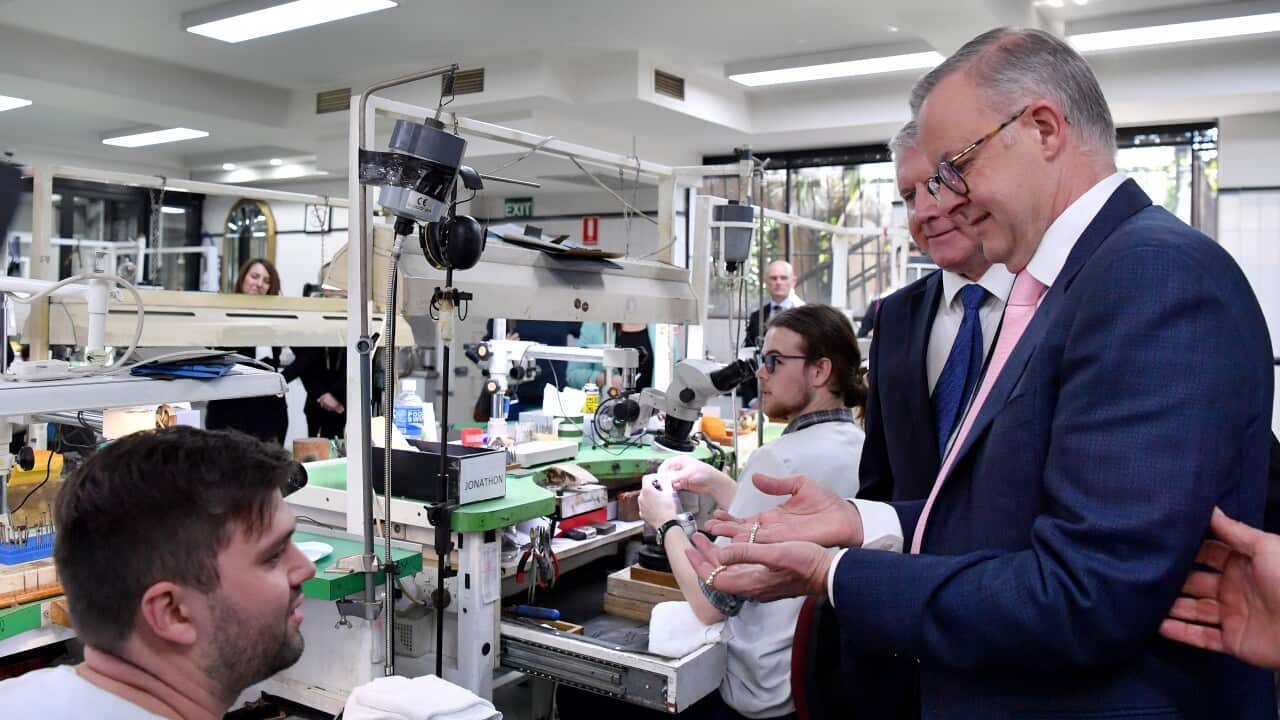Key Points
- Australia continues to battle a long-standing shortage of skilled workers.
- It's prompted questions on whether migration is the best approach to solving the labour crisis.
As Australia continues to battle a long-standing shortage of skilled workers, experts are asking whether migration is the best approach to solving the country's labour crisis.
On Monday, the federal government announced construction managers, nurses and chefs are among just some of the top 10 jobs most in demand over the next five years in Australia.
The release of the list comes ahead of the government's jobs and skills summit, to be held in Canberra on 1 and 2 September. It's aimed at tackling the current shortages.
According to Prime Minister Anthony Albanese, the two-day conference "brings together unions, business groups and the people who help run our world-class VET sector, to look at how we deliver immediate action on the skills shortages Australia is facing.”
What are the 'jobs of the future'?
According to the government's Skill Priority List, the 'jobs of the future' that are expected to remain hot in demand are:
- Construction managers
- Civil engineering professionals
- Early childhood teachers
- Registered nurses
- ICT (information and communications technology) business and systems analysts
- Software and applications programmers
- Electricians
- Chefs
- Child carers
- Aged and disability carers
They're described as a "mixed bag" of professions by Pi-Shen Seet, professor of entrepreneurship and innovation at Western Australia's Edith Cowan University.
Professor Seet said Australia has had a long history of both training domestic workers and using skilled migration to fill gaps in various industries, and it largely depended on supply and demand.

Chefs are among the top 10 jobs in need of filling in Australia. Source: Getty / James Braund
Migration cap to prioritise skilled workers
Australia's permanent migration program for 2022-23 is capped at 160,000 places.
While the places for 2021-22 - also capped at 160,000 - were split almost evenly between skilled and family migrants, workers will be prioritised in the government's latest plan.
Next year, more than two-thirds of the migrants expected to arrive in Australia will be from seven of the various skilled visas available.
But there are calls by both business lobby groups and unions to across the next two years to further alleviate shortfalls in many workplaces.
Deputy Prime Minister Richard Marles supports restoring migration levels but said he did not believe it would solve all of the problems in struggling industries.
"It is important to get our migration flows back to where they were before the pandemic, and that will clearly be part of the solution," he told the Seven Network on Tuesday,
"But the lessons that we have to learn from the last few years of having had the border closures is we've simply not been training enough of our own people."
His comments come after a new survey commissioned by the Electrical Trades Union that revealed only 52 per cent of electrician apprentices completed their qualifications - with more than a third considering quitting.
Professor Seet said while domestic training is beneficial, those who are willing to take on jobs that are in need of filling are not always in Australia, making the country's labour shortage issue "complicated".
"You can throw as much money at the training and the skill side of things, but if the horse doesn't want to drink - if your Australians don't want those jobs - and if the employer doesn't want to use additional incentives to encourage the horse to drink the water, then you will have these other issues, where you have to bring in another horse," he said.
Skilled migration a 'short-term solution'
One of the invitees expected to attend the jobs summit is Christine Holgate, former chief executive of Australia Post, who argued that migration is only a temporary, quick fix for the problem that Australia currently faces.
"I think short term, some skilled migrant workers probably do need to be the solution. Because ... for the roles for our industry, you actually have to be skilled," she told ABC Radio on Tuesday.
Ms Holgate called on maximising Australia's existing population to fill skills shortages through education and training rather than migration.
While the country's unemployment rate sits at a historic 3.4 per cent low, there are 1.8 million people in Australia who are looking for work but couldn't because they are caring for their children.
"If we relied too heavily on skilled immigration, we won't turn around and look at the men and women in this country who actually are working part-time," she said.
"I think what's really required is a long-term commitment to training and education, and that probably starts at schools."
Professor Seet said it's an indication of how critical the jobs summit is - to iron out the wrinkles in Australia's labour industry and continue to be an attractive country for skilled migrants to consider.
"The jobs and skills summit is one of those platforms that actually need everybody to work together," he said.
"Employers need to work with unions, states need to work with states, the federal government needs to be a good player to make sure people work together to put together something that works for both Australians as well as for migrants to make it just as attractive."











